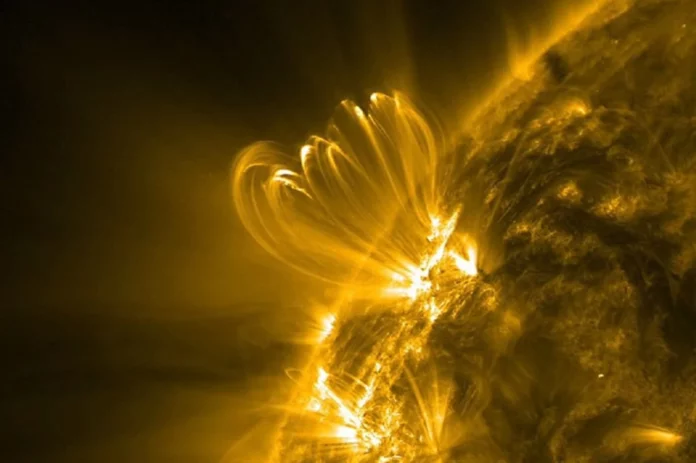Intense solar flares – sudden bursts of electromagnetic radiation from the Sun – can emit dangerous levels of energy strong enough to reach the Earth’s atmosphere. However, predicting solar flares is not as easy as predicting a sunny day.
A team of researchers led by heliophysicist Emily Mason of Predictive Sciences Inc. has identified a type of solar activity in the Sun’s atmosphere that can precede and thus signal future solar flares. Their research, detailed in an article published on December 6 in Astrophysical Journal Letters and presented on January 15 during the 245th meeting of the American Astronomical Society, is important for ensuring the safety of astronauts and space objects.
Indeed, predicting solar flares is crucial to protecting people and technology from erratic solar flares. Solar flares can disrupt satellite communications, GPS systems, and power grids on Earth, as well as expose astronauts and spacecraft to dangerous levels of radiation. Therefore, a reliable early warning system would be a desirable tool for mitigating space weather hazards.
Using NASA‘s Solar Dynamics Observatory, Mason and her colleagues analyzed the flickering of coronal loops – arching structures in the Sun’s outer atmosphere known as the corona – in the run-up to 50 intense solar flares. According to NASA, coronal loops exist in the same magnetically active regions of the Sun that also cause solar flares. The researchers noticed that the brightness of the coronal loops in extreme ultraviolet light varied much more in the hours leading up to a large flare nearby than the brightness of the coronal loops over non-flare regions.
“We found that some of the extreme ultraviolet light over active regions flickers randomly in the hours before a solar flare,” Mason explained in a statement. “The results are really important for understanding flares and could improve our ability to predict hazardous space weather.”
The researchers suggest that observing variations in ultraviolet brightness in coronal loops can predict future solar flares two to six hours before they begin with an accuracy of 60-80%, which – if confirmed – would be more accurate than previously used forecasting methods.
“The sun’s corona is a dynamic environment, and each solar flare is like a snowflake – each flare is unique,” said Kara Knezewski of the Air Force Institute of Technology, who also co-lead the study. “We found that looking for periods of ‘chaotic’ behavior in the coronal loop emission, rather than specific trends, provides a much more consistent metric.”
Vadim Uritsky of NASA’s Goddard Space Flight Center, who also participated in the study, sees the creation of a “well-tested and ideally simpler indicator [of solar flares] ready to move from research to operations.” The researchers also suggest that the stronger the flare, the earlier the flicker peaks, but admit that further analysis is needed to confirm this possible aspect.
Scientists have been trying to predict solar flares for decades. If the recent study is confirmed, flickering coronal loops could function as a flashing warning signal for people and technology in danger.









